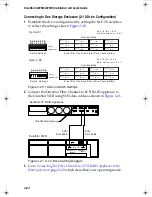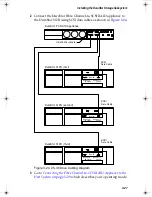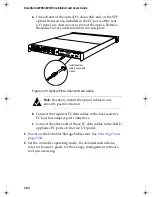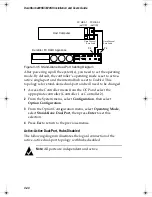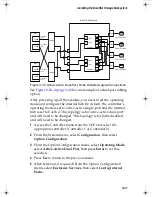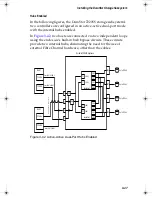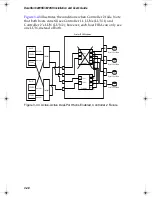
3-36
DuraStor 6220SS/7220SS Installation and User’s Guide
Another advantage is that with an appropriate host driver, the host
has a redundant path to each array.
In dual-host port mode, all arrays appear on both host ports at the
same LUN positions. If both ports are connected to the same host,
the host will see a given array twice unless it does special
processing, called LUN masking, to detect duplicate paths to an
array. A host device driver may provide this functionality. Hosts
can detect redundant paths to an array by matching array serial
numbers from SCSI inquiry data.
About Active-Active Mode
In active-active mode, two Fibre Channel-to-SCSI RAID controllers
cooperate to provide redundancy. If one controller fails, the
remaining controller will take over the failed controller’s
functionality. To accomplish this, each controller has two host Fibre
Channel ports; one of which is normally active, the other is
normally passive. In a failed-over configuration, the passive port
becomes active and assumes the identity of the failed controller.
This failover process occurs without user intervention.
In active-active mode, arrays can be accessed only by the controller
that currently owns them. The other controller will have no
visibility to the other controller’s arrays.
If a controller fails, the surviving controller will take ownership of
all arrays. Pool spares and unassigned disks are visible to both
controllers.
The two controllers communicate via the back-end disk buses.
Although many different message types are sent between the two
controllers, the majority of the data is write cache data. In the
default write-back caching mode, any data that the host writes to a
controller is copied to the other controller before good status is
returned to the host. By mirroring the data, if a controller fails, the
surviving controller will have a copy of all data that has not been
written to the disk.
DuraStor IUG.book Page 36 Wednesday, January 30, 2002 10:49 AM



